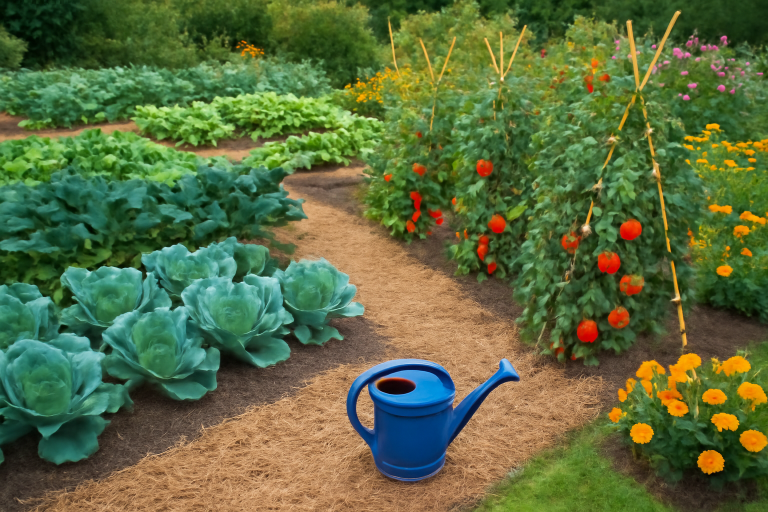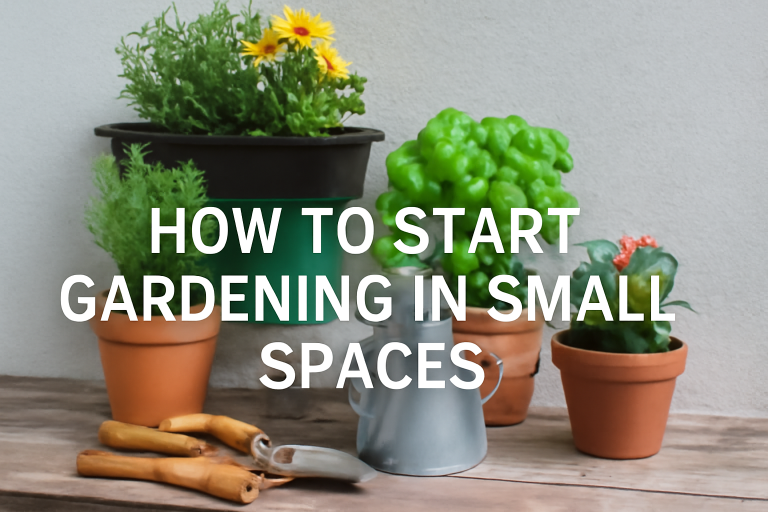

Gardening is a therapeutic, relaxing, and rewarding activity, but many people believe it’s only possible to cultivate it in large gardens or on expansive land. The truth is, it’s entirely possible to start gardening in small spaces, such as balconies, windowsills, patios, or even indoors. What really matters is how you utilize the available space and choose the right plants for the environment.
In this article, we will guide you on how to start your gardening journey, even if you have limited space. Get ready to transform your little corner into a true green paradise!
Before you start planting, it’s essential to evaluate the available space and how it behaves throughout the day. Check how much sunlight the location receives. Some key factors to consider:
Having a clear idea of the environment you’re working with will help you choose the best plants and find the most space-efficient gardening solutions.
Choosing the right plants is one of the most crucial steps in gardening, especially when it comes to small spaces. You need to select plants that will thrive well in the environment they’ll be placed in, taking into account the amount of light, soil type, and care requirements. Here are some options that are ideal for small spaces:
If your space receives plenty of direct sunlight during the day, you can choose plants that love full sun, such as:
If your space receives only indirect light, there are various plants that do well in these conditions:
Some spaces remain completely shaded, which doesn’t have to be an obstacle for those wanting to grow plants. Examples of plants that thrive in shaded environments include:
When you have limited space, gardening solutions need to be practical and compact. Using pots, window boxes, and other containers is one of the easiest ways to start gardening in smaller spaces.
Choose pots that match the style of your space. Small pots are practical and allow you to organize multiple plants in one area. However, make sure the pot has drainage holes to prevent water buildup, which can rot the roots.
If you have a balcony or a small windowsill, window boxes are an excellent option. They allow you to grow many plants without taking up much floor space. Additionally, you can hang them, saving more space on the ground.
For those looking for something more creative and sustainable, alternative containers like PET bottles, cans, wicker baskets, or wooden crates can be used. These can be creatively reused, adding a unique charm to your space.
Soil plays a crucial role in the growth of your plants. Even in small spaces, it’s essential to ensure you’re using the right type of soil for your plants.
Maintaining plants in small spaces requires simple daily care, but these little efforts make a significant difference in their development. Here are some tips:
Gardening, even in small spaces, offers numerous benefits, both for your well-being and for the environment around you. Here are some key benefits:
Starting gardening in small spaces doesn’t have to be a challenge. With the right tips and knowledge, you can create a green, beautiful, and relaxing environment, even with limited room. Remember to choose the appropriate plants, use creative containers, and take care of the soil and plants with attention. Gardening is an activity that can be adapted to any space and brings incredible benefits to your life and the environment.
So, start now and watch your small space transform into a charming garden!